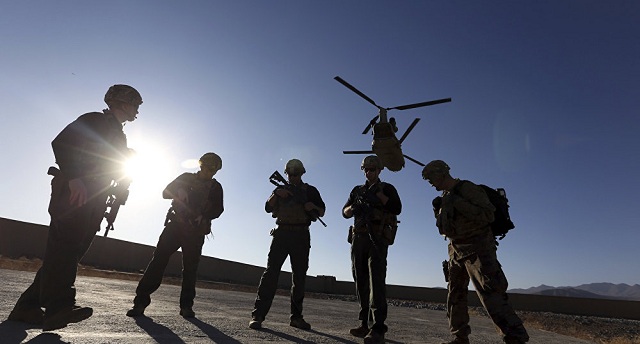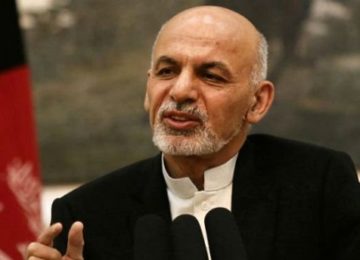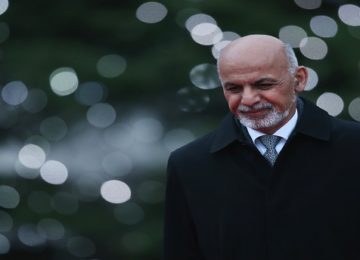A watchdog responsible for reports on U.S. efforts in Afghanistan was told to censor numbers about ISIS and Taliban control of territory from its latest quarterly update, an official wrote in a letter attached to the report issued Tuesday—but within hours, the Pentagon reversed course and allowed the stats to be released and said officials had made a mistake.
Special Investigator General for Afghanistan Reconstruction John Sopko, who has been issuing numbers on “insurgent” control of Afghanistan’s districts since 2015, wrote that his office was told not to include the numbers anymore.
“The Department of Defense instructed SIGAR not to release to the public data on the number of districts, and the population living in them, controlled or influenced by the Afghan government or by the insurgents, or contested by both,” Sopko wrote in the introductory letter to the latest quarterly report.
Sopko called it “troubling” that his office had been told, for the first time, to not report on the data, which is unclassified. As a result of the Pentagon’s instructions, the Tuesday report did not include figures on insurgent control. The SIGAR office operates independently, but the Pentagon, citing security reasons, controls most data on the war in Afghanistan.
But after Sopko released his letter, military officials said that he should have been given permission to release the numbers, and proceeded to provide an update.
“A human error in labeling occurred,” Captain Thomas Gresback, a spokesman for coalition troops in Afghanistan, told Newsweek in an email. “It was NOT the intent … to withhold or classify information which was available in prior reports.”
Gresback said that the coalition controls 56 percent of Afghanistan’s territory, the lowest figure reported to date, and that insurgents hold 14 percent, a new high.
The prior quarterly SIGAR report released in October, but reflecting the situation at the end of August, said that the Afghan government controlled 57 percent of the country, down from 72 percent in November, 2015. Insurgents, predominantly the Taliban, nearly doubled their territory during that time period either controlling or “influencing” 13 percent by August, 2017 up from 7 percent nearly two years before.
U.S. officials have said that the Afghan government needs to control about 80 percent of the country if it wants to permanently root out insurgent activity.
“This we believe is the critical mass necessary to drive the enemy to irrelevance, meaning they’re living in these remote outlying areas, or they reconcile, or they die,” John Nicholson, the top U.S. general in Afghanistan, told reporters in November.
Not everyone was buying the Pentagon line that a human error had occurred.
“While (the Pentagon) is claiming that ‘human error’ led to the exclusion of this information, it is clear that after two years of SIGAR’s reporting on district control, the information is telling a story that (officials) don’t want to hear: the Taliban continue to hold or contest significant amounts of territory in Afghanistan,” Bill Roggio, a senior fellow at the Foundation for Defense of Democracies, told Newsweek.
The Pentagon also moved to classify troop totals for the Afghan National Defense and Security Forces, numbers SIGAR had reported since 2009. Those numbers remain hidden, but the October SIGAR report put the total at 324,450 as of August, with the number remaining fairly steady in recent years between 322,000 and 338,000.
Multiple requests by Newsweek for comment were not immediately returned by Pentagon officials. In the past, Pentagon officials have said there is tension between the military brass and SIGAR, which the officials say tries to surprise them with claims and accusations in reports.
In August, President Donald Trump gave Secretary of Defense James Mattis authority to increase the size of the U.S. force in Afghanistan, with military planners expecting several thousand additional troops to join the fighting this year. That decision came after a heated debate inside the White House over whether to continue the U.S. fight in Afghanistan at all, with the idea of handing the country over to mercenaries floated by at least some in the administration.
“My original instinct was to pull out, and historically I like to follow my instincts,” Trump said on August 21. “From now on, victory will have a clear definition: attacking our enemies, obliterating ISIS, crushing al-Qaeda, preventing the Taliban from taking over the country, and stopping mass terror attacks against Americans before they emerge.”
The security situation in Afghanistan has shown few signs of improving, and on Sunday an ambulance packed with explosives was used as a suicide bomb for an attack against a police checkpoint in Kabul that was one of the deadliest in the country’s history. At least 100 people died, and more than 200 were injured.
This report appeared in News Week on January 30, 2018. Original link.
Disclaimer: Views expressed on this blog are not necessarily endorsed or supported by the Center for Research and Security Studies, Islamabad.








